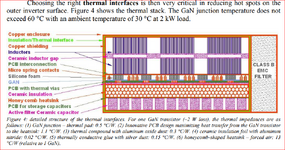biswaIITH
Full Member level 4
Has anyone used Vicor DC-DC ?
How are they able to achieve such small dimension for power rating exceeding 600W to 1000W?
Like what kind of topologies ,devices & switching frequency etc.
Anyone has done any kind of benchmarking
How are they able to achieve such small dimension for power rating exceeding 600W to 1000W?
Like what kind of topologies ,devices & switching frequency etc.
Anyone has done any kind of benchmarking

